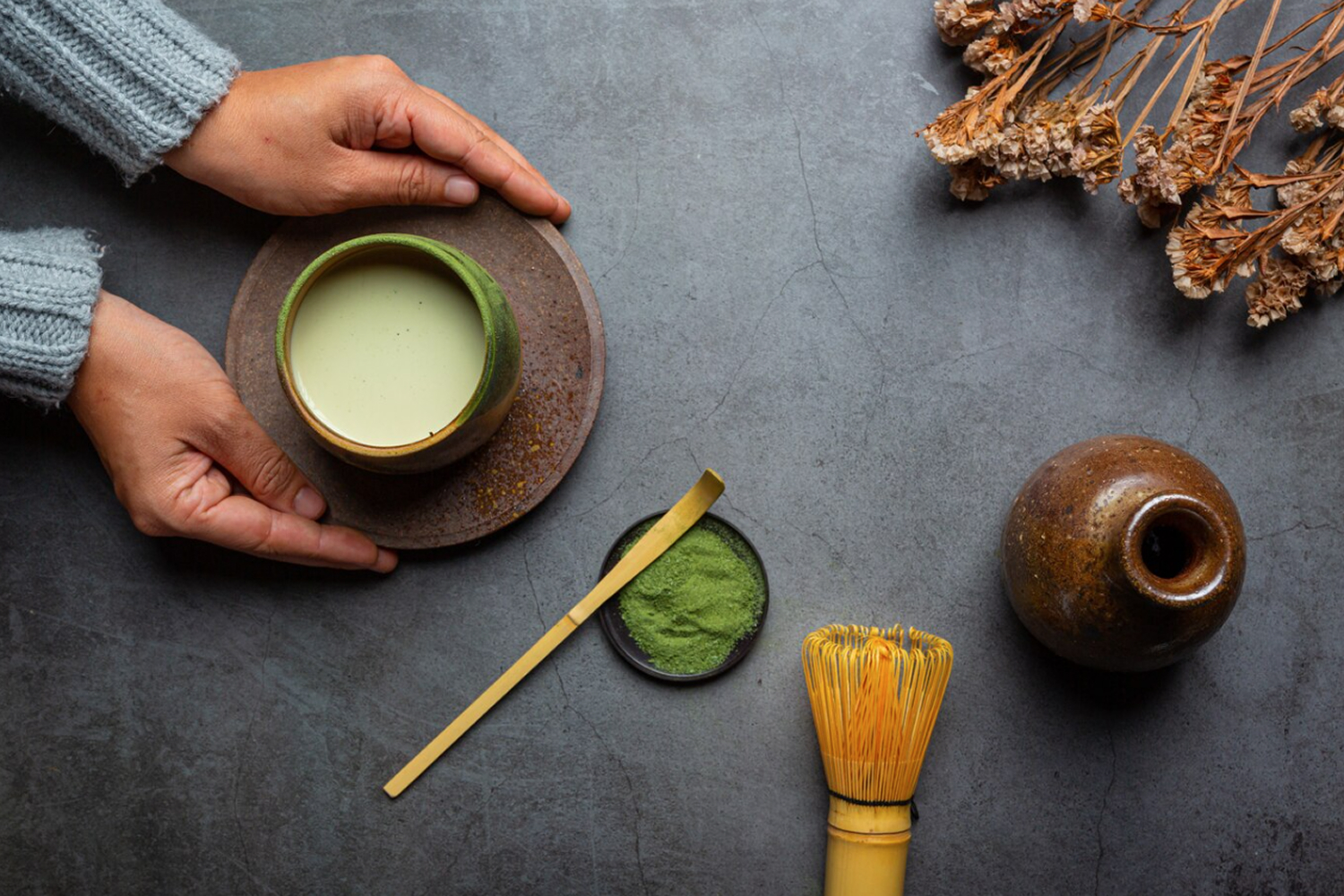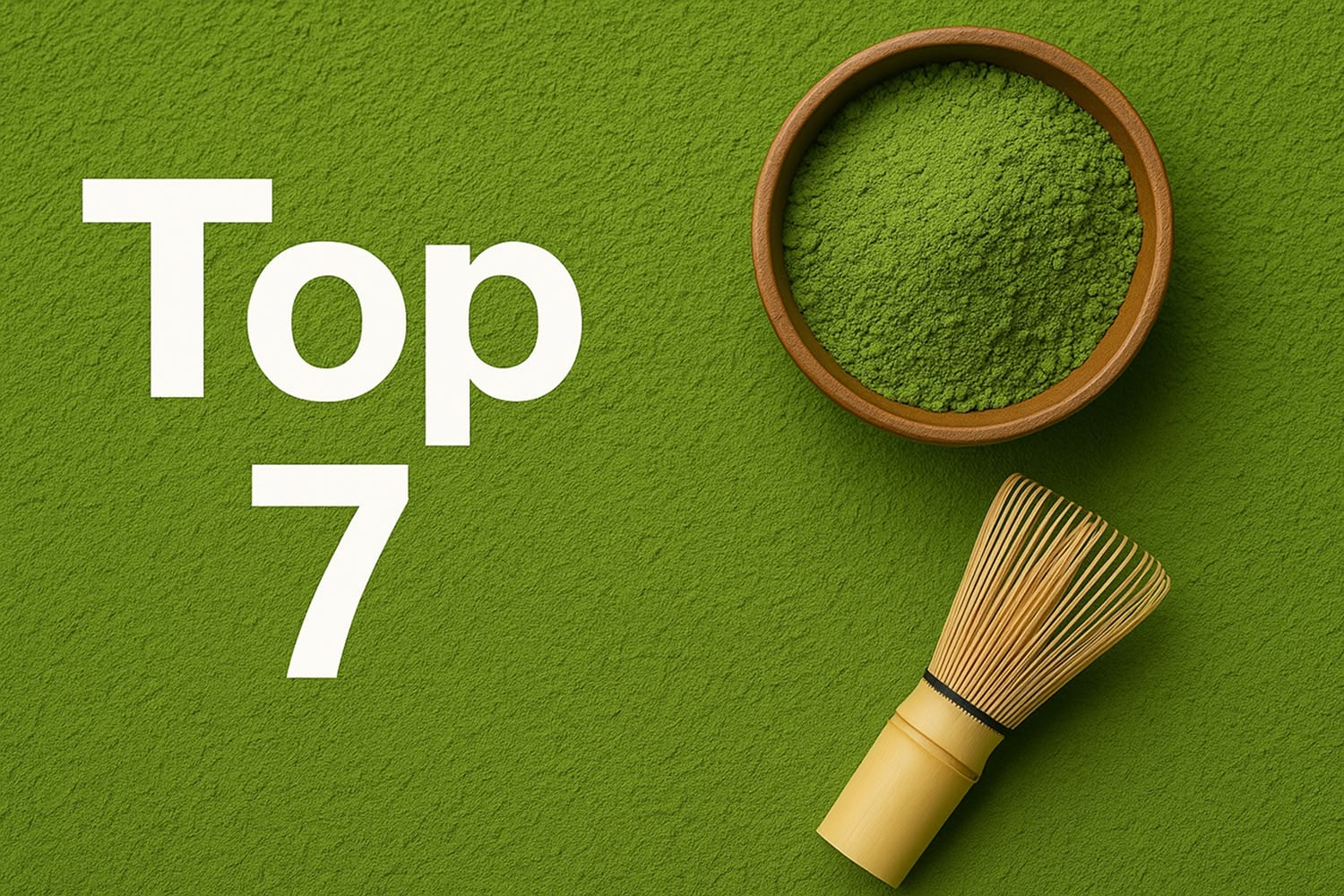What is the composition of matcha tea?


If you’re curious about the health benefits of matcha, you may have wondered what’s really inside this vibrant green powder. Behind its bright color lies a powerful blend of nutrients. So, what exactly is matcha made of? Why is it so popular in the wellness world? And how can you choose the right one for your goals?
In this article, we’ll cover:
- The main compounds found in matcha
- Their roles in the body
- What to look for when picking a good matcha powder
What Exactly Is Matcha Tea? 🍵
Matcha is a finely ground green tea powder that originates from Japan. It’s made by stone-grinding tencha leaves into a delicate powder. Unlike other teas, you consume the whole leaf, which explains its exceptional nutrient density.
🌱 Matcha plants are grown in the shade for three to four weeks before harvest, which boosts their chlorophyll and amino acid content. The result is a tea that’s both smooth and vibrant — and highly concentrated.
What’s Inside: The Key Compounds in Matcha
Here are the main natural actives you’ll find in a high-quality matcha:
1. L-Theanine
An amino acid that promotes mental calm without drowsiness. It works in synergy with caffeine to deliver smooth, sustained focus — no jitters, no crash.
2. Caffeine
Matcha contains about 30–70 mg of caffeine per gram, but its effects are gentler than coffee thanks to the L-theanine. It’s perfect for staying alert and focused.
3. Catechins (including EGCG)
Potent antioxidants, especially EGCG (epigallocatechin gallate), which is well-known for its anti-inflammatory and metabolic properties.
4. Chlorophyll
This gives matcha its intense green hue and helps detoxify the body by supporting liver function.
5. Vitamins and Minerals
Matcha naturally provides vitamins A, C, E, and B-complex (B1, B2, B3), plus small amounts of potassium, iron, calcium, and zinc.

Japanese Green Tea Co
Prix à partir de :
14,00$
Use code LMC to enjoy 10% off premium, authentic Japanese matcha. Discover the perfect balance of quality and tradition with every cup.
What Are the Benefits of This Unique Composition?
Thanks to this powerful blend, matcha is linked to several proven wellness benefits:
✅ Steady energy without caffeine crashes
✅ Enhanced focus — ideal for work or study sessions
✅ Immune system support
✅ Strong antioxidant action for cell protection
✅ Metabolic boost — helpful when you’re watching your weight
📝 A 2020 study published in Nutrients highlighted matcha’s potential for regulating oxidative stress and inflammation.
How to Use Matcha Effectively
It’s best to start with half a teaspoon (about 1g) in 60–80 ml of hot water (70–75°C). Whisk until you get a fine froth.
💡 You can also add it to:
- Smoothies
- Plant-based lattes
- Sweet or savory recipes (pancakes, energy balls, etc.)
For maximum benefit, enjoy matcha in the morning or early afternoon.
Are There Any Side Effects?
Matcha is well tolerated, but watch out for:
- Excess caffeine if you already consume a lot of it
- Digestive discomfort if taken on an empty stomach, especially if yours is sensitive
- Product quality — lower-grade powders may contain traces of heavy metals or pesticides
👉 Always choose organic matcha from Japan, ideally from the first or second harvest.
How to Pick a Quality Matcha Powder
Keep these practical tips in mind:
- Origin: Japan (Uji, Nishio, Kyushu) is the gold standard
- Color: Bright, vivid green — never dull or yellowish
- Texture: Ultra-fine powder, never gritty
- Taste: Umami-rich, naturally sweet, with minimal bitterness
- Organic label: Helps avoid pesticide residues
💡 Some brands offer flavored or “latte” blends — convenient but usually less potent than pure ceremonial matcha.
FAQ – What People Often Ask About Matcha’s Composition
1. Does matcha contain sugar?
No, pure matcha has no added sugar. Its mild sweetness comes naturally from its L-theanine content.
2. Is matcha higher in antioxidants than regular green tea?
Yes — because you consume the whole leaf. It can have up to 10x more antioxidants than steeped green tea.
3. Can I drink it every day?
Absolutely! Just stick to a moderate amount (1–2g per day).
4. Does matcha contain gluten or allergens?
Pure matcha is naturally gluten-free, dairy-free, and soy-free. Always check added ingredients in flavored products.
5. What’s the difference between culinary and ceremonial matcha?
Ceremonial matcha is smoother, milder, and meant for drinking. Culinary matcha is slightly more bitter and best for cooking.
In Summary: A Superfood Worth Adding to Your Daily Routine
Thanks to its unique composition, matcha is a powerful ally for clean energy, focus, and overall wellness. Pick wisely, enjoy mindfully, and matcha can easily become your new daily ritual. 🌱✨

Découvrez le top 7 des meilleurs Matcha en poudre
Notre sélection exclusive des Shilajits himalayens les plus purs et efficaces, testés et approuvés par nos experts.
